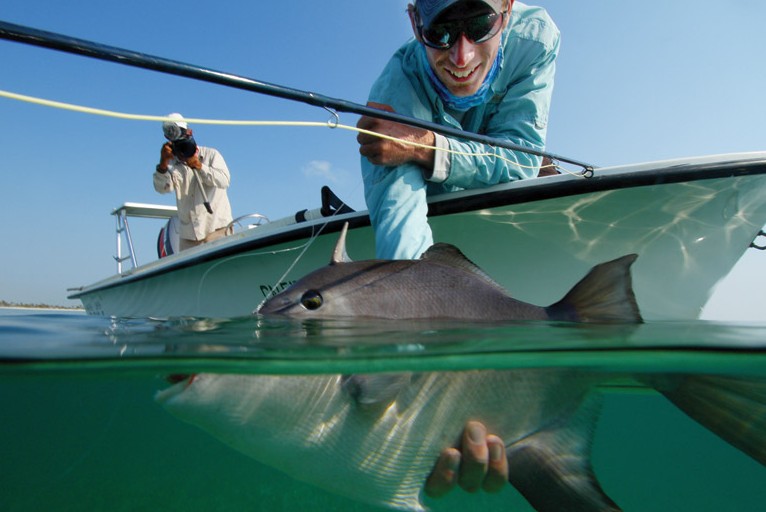Advertisement
Close your eyes and imagine casting your eight-weight on the flats of a tropical paradise, where exotic beauties such as bonefish, permit, tarpon and triggerfish wait to streak away with your Crazy Charlie. An image that appealing can almost make you forget the infallible rules of the travelling angler: You will forget something, you will lose something and you will break something. If you’re planning a southern fishing getaway this winter, the key to avoiding a tropical depression is proper planning and packing. So when the gremlins inevitably strike, it will be a minor glitch and not a trip-ending disaster. Here’s what you need to bring.
Tackle
Reputable outfitters will provide a list of required tackle—study it like the Rosetta Stone. Also look for tips offered by other resorts in the area, past visitors and online fly-fishing communities. But for starters, take doubles or triples of everything—rods, reels, lines—and three times more tippet and wire than you think you’ll need. Saltwater, coral and toothy critters are hard on equipment. That’s why you’ll also need spare tip-tops, guides and a few feet of electrical or duct tape for emergency repairs.
Advertisement
Rod tubes
I thought air travel with a toddler was stressful until the first time I flew with my fly rods. Given their unique size and shape, there are just so many ways for your rods to get busted or, sadly, boosted. While both Transport Canada and the U.S. Transportation Security Administration specifically allow rods as carry-on luggage, your airline might not. And checking a rod at the last minute, especially in its original case, is a bad option—the likes of the Sage logo might as well say “Steal me.” No, the best solution is checking your rods in a bazooka-style rod tube, even if it costs a few extra bucks. If the case is brand new, scuff it up and add some stickers—anything so it looks less valuable. The TSA also allows “fragile tackle” such as flies in your carry-on, but it’s easy to imagine an overzealous officer confiscating them. Best stash them in your checked luggage.
Accessories
Along with the gear you always need, such as nippers, pliers, hook hone and Gink, bring a tailing glove or Boga-Grip to help safely hold your prize fish for a few photos. And whether you’re wading or in a boat, you’ll need a small pack to carry sunscreen, bug repellent, raingear and a camera, as well as water and snacks (see “Keeping it handy”). And don’t forget to bring a small flashlight, a mini-screwdriver and a cleaning cloth for your polarized sunglasses.
Apparel
Advertisement
Splurge on some top-quality tropical shirts and pants (synthetic, never cotton) with long or zip-off sleeves and legs. They’ll dry quickly, pack small and protect your pasty hide from the sun. Since even one jellyfish sting or lacerated toe is one too many, you also won’t regret good flats boots or wading shoes. And, of course, today’s well-dressed Caribbean fly fisherman must have a Buff—a stretchy, lightweight cloth tube that protects the face from wind and sun.
Extras
Spare polarized sunglasses are a must, and since your cellphone may not work, bring a travel alarm clock as backup. Casting and stripping all day will surely cut and blister your fingers, so you might also be grateful for some waterproof first aid tape. And for temporarily repairing both tackle and flesh, you can’t beat Krazy Glue. Seriously. As for storing these extras, zip-lock bags can be surprisingly handy. Despite the Sturm und Drang of travel, the goal is to be prepared, not scared. Ultimately, the most important items to bring are your senses of humour, adventure and wonder.
Advertisement

